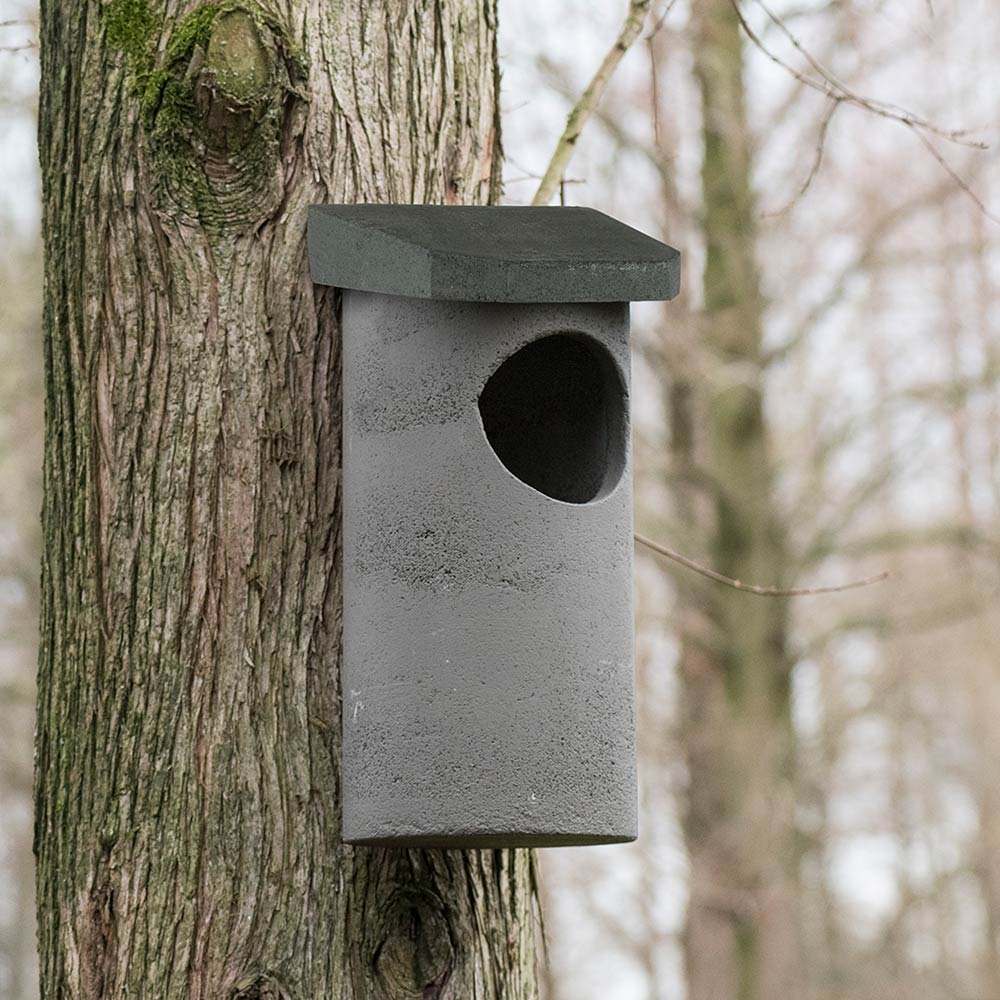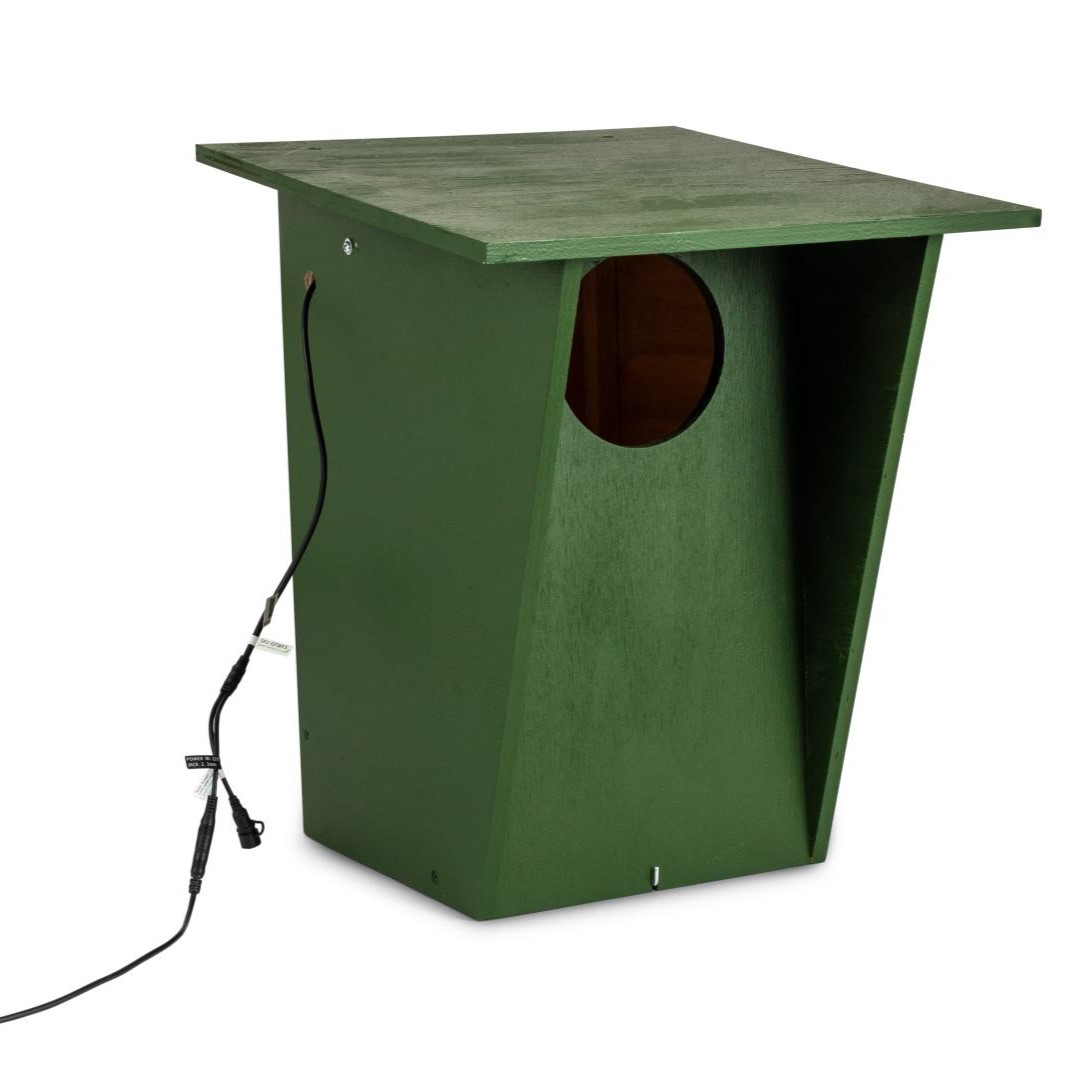Owl Boxes
Owls are some of the most mysterious and captivating birds in the animal kingdom. As nocturnal predators, they play a vital role in controlling rodent populations and maintaining ecological balance. Read more here.
However, due to increasing urbanization, loss of natural habitats, and deforestation, owls are struggling to find suitable nesting sites. One way to support these incredible birds is by installing an owl box in your garden, farmland, or woodland area. By doing so, you provide them with a secure place to roost and raise their young while also benefiting from their natural pest control abilities.
Why do owls need nesting boxes?
Unlike smaller garden birds, which often build nests in bushes or trees, many owl species rely on hollow tree trunks, abandoned buildings, or large cavities for shelter. As these natural nesting sites become scarcer, owls face increasing challenges in finding safe places to breed.
Installing an owl box can help:
- Provide essential shelter – Owls need a dry, secure, and spacious area to raise their chicks.
- Protect owls from predators – Natural nesting spots are often at risk from predators such as raccoons, martens, and even larger birds of prey. A well-designed owl box minimizes these threats.
- Encourage natural rodent control – Owls are highly efficient hunters, capable of catching several mice, voles, or rats each night. By attracting them to your property, you reduce the need for harmful pesticides.
- Support declining owl populations – Due to habitat destruction, several owl species are seeing their numbers drop. Providing a nest box is a small but meaningful step toward conservation.
Choosing the perfect owl box
Not all owl boxes are the same and different owl species have unique nesting requirements. When selecting an owl box, consider the following factors:
Size and Design
Owls need plenty of space, as they usually lay several eggs and raise multiple chicks in one breeding season. A suitable box should have:
- A spacious interior – To accommodate growing chicks and provide room for movement.
- A secure entrance – Large enough for the owl but small enough to keep predators out.
- Proper ventilation – To prevent overheating and condensation buildup.
- Drainage holes – To keep the nesting area dry.
Best materials for an owl box
Durability is key when choosing an owl box. Since it will be exposed to various weather conditions, the materials should be strong and long-lasting. Ideal options include:
- WoodStone – An eco-friendly, highly durable option that provides insulation and weather resistance.
- Thick natural wood – At least 15-20 mm thick to withstand harsh conditions. Avoid treated wood, as chemicals can be harmful to owls.
- Reinforced corners and screws – To prevent the box from deteriorating quickly.
Where to place an owl box?
Location is crucial for the success of your owl box. Owls are extremely sensitive to disturbances, so proper placement will greatly increase the chances of occupancy.
Guidelines for ideal placement
- Height matters – Position the box at least 3-5 meters above the ground to keep it safe from ground predators.
- Choose a quiet location – Avoid busy roads, urban areas, or places with frequent human activity.
- Ensure a clear flight path – The entrance should be unobstructed by branches, allowing owls to enter and exit easily.
- Face it in the right direction – The entrance should ideally face east or southeast, away from strong winds and rain.
How to maintain an owl box?
Owls are low-maintenance tenants, but occasional upkeep is necessary to keep their nesting space in top condition.
Annual cleaning and inspection
- Clean the box once a year in late autumn, after the breeding season is over.
- Remove old nesting materials, feathers, or debris to prevent mites and bacteria from accumulating.
- Check for signs of damage, such as cracks or loose hinges, and repair them if needed.
- Avoid using chemicals or pesticides inside the box, as they can be toxic to owls.
Encouraging owls to use the box
If an owl box remains unoccupied for a long time, try these strategies:
- Install it in an area with a known owl presence. Look for owl calls, droppings, or pellets as signs of activity.
- Keep the area dark and undisturbed. Owls prefer nesting in quiet, low-light environments.
- Provide natural hunting grounds nearby. Open fields, woodlands, or farmlands rich in small mammals will attract owls.
Which owls can you attract?
Depending on where you live, different owl species may be interested in your nesting box. Here are some common species and their nesting preferences:
| Owl species | Preferred box type | Typical habitat |
| Barn Owl | Large wooden box with a front opening |
Farmlands, meadows, open countryside |
| Tawny Owl | Deep wooden box with a round entrance | Woodlands, parks, gardens |
| Little Owl | Compact box with a side entrance | Open fields, rural areas |
| Long-eared Owl | Open-fronted platform in trees | Dense forests, hedgerows |
Bringing owls to your garden with CJ Wildlife
At CJ Wildlife, we are dedicated to providing high-quality, durable owl boxes designed in collaboration with wildlife experts. Our owl boxes are made from eco-friendly materials, ensuring long-lasting shelter while supporting sustainability.
By installing an owl box from CJ Wildlife, you’re not only helping these majestic birds find a safe place to nest, but you’re also contributing to the conservation of biodiversity in your area. Explore our range of owl boxes today and transform your garden into a sanctuary for these beautiful nocturnal hunters.







